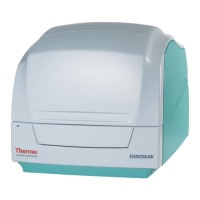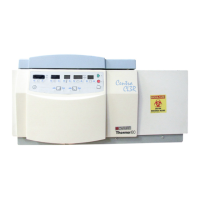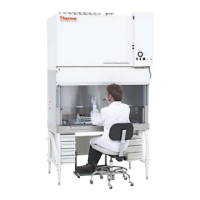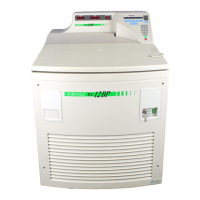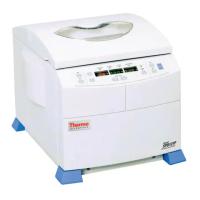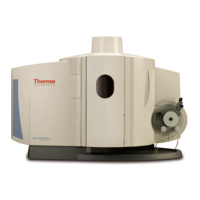3
Vacuum System
Inlet Gases Hardware
Thermo Scientific Orbitrap Fusion Series Hardware Manual 19
Helium Regulator
The helium (damping) regulator controls the flow of helium into the LIT analyzer cavity.
Helium (275 70 kPa [40 10 psi], 99.999% ultra high purity [UHP]) enters the mass
spectrometer through a 1/8 in. port on the back of the mass spectrometer. The mass
spectrometer regulates the flow of helium and delivers it to the ion trap.
Helium in the ion trap cavity dampens ionic motion and improves the performance of the
mass spectrometer. See “Helium Damping Gas” on page 41.
Nitrogen Gas Valves
The valves for the sheath, auxiliary, and sweep gases control the flow of dry nitrogen gas into
the API source (Figure 5). Sheath gas is the inner-coaxial nitrogen gas that helps nebulize the
sample solution into a fine mist as the solution exits the API spray insert nozzle. Auxiliary gas
is the outer-coaxial nitrogen gas that helps the sheath gas in the nebulization and evaporation
of the sample solution by focusing the vapor plume and lowering the humidity in the API
source. Sweep gas is the off-axis nitrogen gas that flows out from behind the optional ion
sweep cone to aid in solvent declustering and adduct reduction. The optional ion sweep cone
has an inlet for the sweep gas.
The data system controls the valves that regulate the nitrogen pressure (see “Checking the Gas
Supplies” on page 63). You can set the gas flow rates on the Ion Source pane in the Tune
application.
High-purity (HP, 99%) and ultra-high-purity (UHP, 99.999%) dry nitrogen enter the back of
the mass spectrometer through two ports:
• 1/4 in. port for the HP nitrogen gas, which functions as the sheath, auxiliary, and sweep
gases
• 1/8 in. port for the UHP nitrogen gas, which functions as the higher energy
collision-induced dissociation (HCD) collision gas and the venting gas. For instruments
with the electron transfer dissociation (ETD) option, the UHP nitrogen gas also
functions as the ETD make-up gas and reagent carrier gas.
For a list of guidelines for the operating parameters, refer to the section “LC Flow Rate
Ranges” in Chapter 1 of the Orbitrap Fusion Series Getting Started Guide.
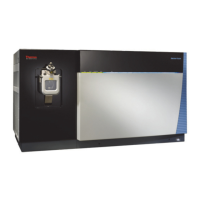
